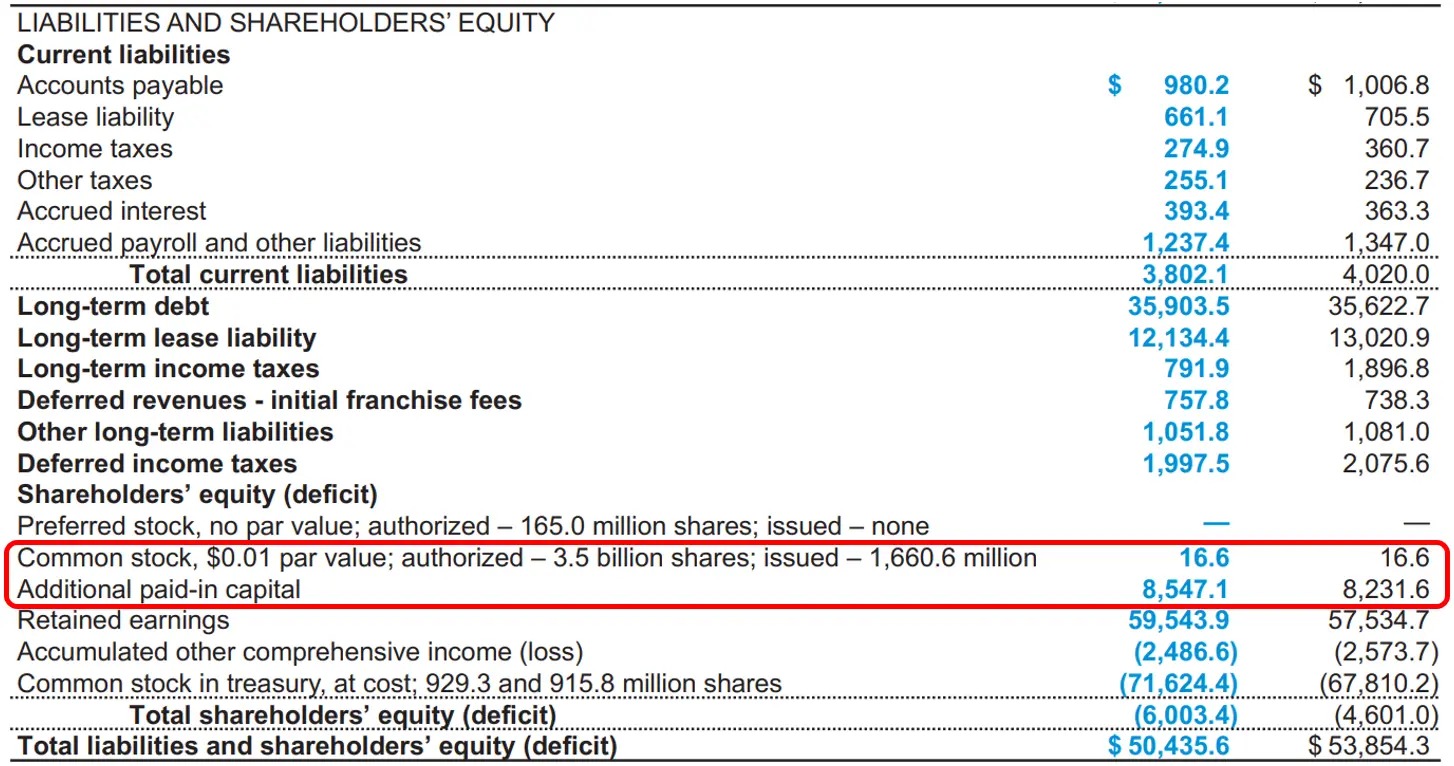

Finance
How Do Green Bonds Work
Published: October 14, 2023
Learn how green bonds work in the world of finance and how they are contributing to sustainable investments and environmental initiatives.
(Many of the links in this article redirect to a specific reviewed product. Your purchase of these products through affiliate links helps to generate commission for LiveWell, at no extra cost. Learn more)
Table of Contents
Introduction
Welcome to the world of green bonds, where finance meets sustainability. In recent years, there has been a growing concern about the environmental impact of various industries and the urgent need for sustainable development. As a result, the concept of green bonds has emerged as a powerful instrument to channel funds towards environmentally friendly projects.
Green bonds are a type of fixed-income investment product that specifically finance projects with positive environmental outcomes. These bonds are often issued by governments, municipalities, and corporations as a means of raising capital for projects such as renewable energy, energy efficiency, clean transportation, sustainable agriculture, and waste management. Green bonds provide investors with an opportunity to align their financial goals with their environmental values.
The primary aim of green bonds is to address environmental challenges while generating financial returns. By investing in green bonds, investors can contribute to the growth of sustainable initiatives, support the transition to a low-carbon economy, and promote positive change in various sectors.
Green bonds have gained significant popularity in recent years, with a surge in issuance and increasing demand from investors. According to the Climate Bonds Initiative, the global green bond market reached a record value of $257 billion in 2019, demonstrating the strong interest and confidence in this investment instrument.
In this comprehensive guide, we will take a closer look at how green bonds work, outlining their benefits, the process of issuance, and the challenges they face. We will also explore the future outlook for green bonds and delve into real-life case studies that highlight successful green bond projects.
So, whether you are an investor seeking to diversify your portfolio, a company exploring sustainable financing options, or simply someone interested in learning more about the intersection of finance and sustainability, join us as we delve into the world of green bonds and discover their transformative potential.
Definition of Green Bonds
Green bonds are a type of fixed-income financial instrument that are specifically designed to finance projects with positive environmental outcomes. They are issued by governments, municipalities, and corporations to raise funds for projects aimed at promoting sustainability and combating climate change.
What sets green bonds apart from traditional bonds is their strict adherence to environmental criteria. The proceeds from green bond issuances are earmarked for specific purposes, such as renewable energy projects, energy efficiency initiatives, sustainable agriculture, clean transportation, and waste management. The funds are used to finance and refinance these environmentally friendly projects, ultimately helping to mitigate climate change and reduce greenhouse gas emissions.
To ensure transparency and accountability, green bonds are typically certified or verified by independent third-party organizations, such as the Climate Bonds Initiative or the International Capital Market Association (ICMA), based on strict environmental standards. This certification process provides investors with confidence that their capital is being used to fund projects with genuine environmental benefits.
Green bonds can be issued in various forms, including government bonds, corporate bonds, and municipal bonds. They can also be structured as either green use-of-proceeds bonds or green revenue bonds. Use-of-proceeds green bonds allocate the funds raised specifically to environmentally friendly projects, while revenue bonds are backed by the revenue generated from these projects.
It’s important to note that green bonds are part of a broader category of sustainable bonds. Other types of sustainable bonds include social bonds, which finance projects that have a positive social impact, and sustainability bonds, which combine both environmental and social elements. However, in this article, we will focus specifically on green bonds and their environmental significance.
By investing in green bonds, individuals and institutions have the opportunity to support projects that contribute to a more sustainable future, while also earning a financial return. This dual benefit has made green bonds increasingly attractive to a wide range of investors, including institutional investors, asset managers, pension funds, and retail investors.
Now that we have explored the definition and purpose of green bonds, let’s delve deeper into the numerous benefits they offer to both issuers and investors.
Benefits of Green Bonds
Green bonds offer a multitude of benefits to both issuers and investors, making them an increasingly popular investment choice within the sustainable financing landscape. Let’s explore some of these benefits:
- Environmental Impact: The primary benefit of green bonds is their ability to finance projects with positive environmental outcomes. By investing in green bonds, issuers and investors can actively contribute to addressing pressing environmental challenges, such as climate change, pollution, and resource depletion. These bonds provide a mechanism to direct capital towards sustainable initiatives and promote the transition to a low-carbon economy.
- Market Differentiation: For issuers, green bonds provide a distinct advantage in terms of market positioning and reputation. By issuing green bonds, governments, municipalities, and corporations can demonstrate their commitment to sustainability and environmental stewardship. This can enhance their brand image and attract environmentally conscious investors, ultimately strengthening their market presence.
- Access to Capital: Green bonds open up avenues for issuers to raise capital from a wider range of investors. By tapping into the growing pool of socially responsible investors, issuers can diversify their investor base and potentially access lower-cost capital. Green bonds can generate interest from institutional investors, asset managers, and pension funds that have specific environmental, social, and governance (ESG) investment mandates.
- Investment Opportunities: For investors, green bonds present an opportunity to align financial goals with environmental values. By investing in green bonds, individuals and institutions can support projects that have a positive impact on the planet while potentially earning a competitive financial return. This allows investors to integrate sustainability into their investment portfolios and diversify their holdings.
- Risk Mitigation: Green bonds can offer risk mitigation benefits for issuers. By financing environmentally friendly projects, issuers can improve their resilience to climate-related risks and regulatory changes. Additionally, green bonds may provide issuers with access to certain government incentives, subsidies, or tax breaks that are specifically designed to promote sustainable initiatives.
- Standardization and Transparency: Green bonds adhere to strict environmental standards and are typically certified or verified by independent third-party organizations. This certification process ensures transparency and credibility in identifying eligible green projects. Investors can have confidence that their capital is being used for environmentally beneficial purposes and can access detailed information on the environmental impact and use of proceeds of the green bond.
Overall, green bonds offer a win-win scenario by combining financial returns with positive environmental impact. They serve as a powerful tool for sustainable development, enabling issuers and investors to engage in responsible investing and contribute to a greener future.
Now that we understand the benefits of green bonds, let’s dive into the mechanics of how these bonds actually work.
How Green Bonds Work
Green bonds operate in a similar manner to traditional bonds but with a specific focus on projects with positive environmental impact. Here is a breakdown of how green bonds work:
- Issuer: The issuer, which can be a government entity, municipality, or corporation, decides to raise funds through issuing green bonds to finance environmentally friendly projects. The issuer typically outlines the specific environmental goals and criteria that the projects must meet.
- Project Selection: The issuer identifies eligible projects that align with the environmental objectives of the green bond issuance. These projects can range from renewable energy installations and energy-efficient buildings to sustainable transportation infrastructure and waste management initiatives.
- Framework Development: The issuer develops a green bond framework that provides guidelines and standards for project selection, allocation of proceeds, and reporting requirements. This framework ensures transparency and accountability throughout the life cycle of the green bond.
- Investor Engagement: The issuer creates a prospectus or offering document that outlines the details of the green bond issuance, including the size, maturity, interest rate, and use of proceeds. This document is made available to potential investors, who can then decide whether to invest in the green bond.
- Issuance and Allocation: Once the green bond issuance is launched, investors have the opportunity to purchase the bonds. The proceeds from the bond issuance are ring-fenced or earmarked for the specific green projects outlined in the green bond framework.
- Project Implementation: The issuer allocates the funds raised from the green bond issuance to the identified eligible projects. These projects are implemented according to the predefined environmental criteria and goals.
- Monitoring and Reporting: Throughout the life cycle of the green bond, the issuer is responsible for monitoring and reporting on the progress, impact, and use of proceeds of the funded projects. This ensures transparency and allows investors to track the environmental performance of the projects.
- Interest Payments and Repayment: Periodically, the issuer makes interest payments to the bondholders based on the terms outlined in the green bond prospectus. At maturity, the issuer repays the principal amount of the bond to the bondholders, typically using the revenue generated from the funded projects.
It is important to note that the certification and verification of green bonds by independent third-party organizations play a crucial role in providing assurance to investors. These organizations assess and approve the alignment of the green bond issuance with recognized environmental standards, ensuring that the proceeds are used for the intended environmental projects.
The success of green bonds relies on the collaboration between issuers, investors, and independent certifiers. This collaborative effort ensures that capital is directed towards projects that advance sustainability, mitigate climate change, and promote environmental stewardship.
Now that we have explored the mechanics of green bonds, let’s dive into the process of issuing green bonds and the importance of certification.
Green Bond Issuance Process
The issuance of green bonds typically follows a structured process that involves several key steps. Here is an overview of the green bond issuance process:
- Preparation: The issuer begins by conducting a thorough assessment of the projects that qualify for green bond financing. This involves identifying the environmental objectives, setting internal guidelines, and determining the framework for project selection and allocation of proceeds.
- Framework Development: Once the projects are identified, the issuer develops a green bond framework that outlines the criteria and guidelines for project eligibility, reporting, and impact assessment. This framework serves as a blueprint for the green bond issuance and helps ensure transparency and credibility.
- Certification: After developing the green bond framework, the issuer may seek certification or verification from independent third-party organizations. These organizations evaluate the issuer’s framework and assess its alignment with recognized environmental standards. The certification process adds legitimacy to the green bond issuance and provides assurance to investors.
- Prospectus Preparation: The issuer prepares a prospectus or offering memorandum that provides detailed information about the green bond issuance. This document outlines the terms of the bonds, such as the size, maturity, interest rate, and use of proceeds. It also includes information about the issuer’s environmental objectives and the projects that will be financed.
- Investor Marketing: The issuer conducts a marketing campaign to generate interest and attract investors. This involves reaching out to potential investors, such as institutional investors, asset managers, pension funds, and retail investors who prioritize sustainable investments. The issuer highlights the environmental benefits and financial returns associated with investing in the green bond.
- Book Building and Pricing: During the book building process, investors express their interest in purchasing the green bonds. This demand helps the issuer determine the final size and pricing of the bond issuance. The issuer aims to strike a balance between attracting sufficient investment and ensuring competitive pricing.
- Bond Issuance: Once the pricing is determined, the green bonds are officially issued, and investors purchase them. The proceeds from the bond issuance are then transferred to a designated account specifically for financing the eligible green projects outlined in the green bond framework.
- Project Implementation and Reporting: The issuer allocates the funds raised from the green bond issuance to the identified eligible projects. Throughout the project implementation phase, the issuer closely monitors the progress and impact of the projects. Regular reporting is provided to investors, showcasing the environmental performance and use of proceeds.
- Interest Payments and Repayment: As per the terms outlined in the prospectus, the issuer makes periodic interest payments to the bondholders. At maturity, the issuer repays the principal amount of the bond to the bondholders, typically using the revenue generated from the funded projects.
The green bond issuance process is structured to ensure transparency, accountability, and credibility. By following this process and obtaining certification, issuers signal their commitment to environmental sustainability and provide investors with confidence that their investments are contributing to positive environmental outcomes.
Next, let’s explore the importance of green bond certification and the role it plays in promoting transparency and accountability.
Green Bond Certification
Green bond certification plays a crucial role in verifying the environmental integrity and credibility of green bond issuances. Certification provides assurance to investors that the proceeds from the bond issuance are being used for environmentally beneficial projects. Here’s an overview of the importance of green bond certification:
Enhancing Credibility: Green bond certification adds credibility to the issuer’s environmental claims. By undergoing the certification process, issuers demonstrate their commitment to transparency, accountability, and adherence to recognized environmental standards. This verification enhances the credibility of the green bond and instills confidence in investors that their capital is financing genuine green projects.
Third-Party Assessment: Green bond certification involves an independent third-party assessment of the issuer’s green bond framework and the projects being financed. These certifiers, such as the Climate Bonds Initiative or the International Capital Market Association (ICMA), evaluate the alignment of the framework with recognized industry standards. They assess the eligibility criteria, the process for project evaluation and selection, and the reporting and impact assessment requirements. The involvement of independent certifiers ensures that the green bond meets stringent environmental guidelines.
Transparency and Reporting: Certification requires issuers to provide comprehensive reporting on the use of proceeds and the environmental impact of the funded projects. This transparency allows investors to track how their investments are contributing to the intended environmental goals. Certifiers also review these reports to ensure that the issuer is complying with the agreed-upon standards and maintaining transparency throughout the life cycle of the green bond.
Standardization: Green bond certification helps standardize the market by establishing a common set of principles and guidelines. This standardization facilitates comparability among different green bond issuances, making it easier for investors to assess and differentiate between investments. It also enables issuers to benchmark their green bond frameworks against industry best practices, fostering continuous improvement within the green bond market.
Market Confidence: The certification process instills confidence in investors by assuring them of the reliability and integrity of the green bond. It demonstrates the issuer’s commitment to upholding environmental standards and provides clarity on the environmental impact and purpose of the bond issuance. This increased market confidence attracts a broader range of investors and contributes to the growth and stability of the green bond market.
While certification is not mandatory for issuing green bonds, it has become a widely adopted practice within the industry. Investors often prefer certified green bonds as they offer greater transparency and assurance regarding the environmental impact of their investments. Certifiers play a crucial role in promoting the credibility of green bonds and establishing trust between issuers and investors.
Now that we understand the significance of green bond certification, let’s explore the various types of investors who are interested in investing in green bonds.
Investors in Green Bonds
Green bonds have attracted a diverse range of investors who are interested in aligning their financial objectives with their environmental values. Here are some key types of investors that are drawn to green bonds:
- Institutional Investors: Institutional investors, such as pension funds, insurance companies, and sovereign wealth funds, play a significant role in the green bond market. These large-scale investors often have long-term investment horizons and seek to diversify their portfolios while incorporating environmental, social, and governance (ESG) considerations. Investing in green bonds enables institutional investors to incorporate sustainable finance strategies and support projects with positive environmental impact.
- Asset Managers: Asset management firms play a crucial role in facilitating green bond investment. These firms manage investment portfolios on behalf of clients, including pension funds, endowments, and high-net-worth individuals. Asset managers recognize the growing demand for sustainable investments and offer dedicated funds or strategies that focus on green bonds. These strategies allow investors to access a diversified portfolio of green bonds across various sectors and regions.
- Investment Banks: Investment banks are actively involved in the issuance and underwriting of green bonds. They assist issuers in structuring and marketing the bond issuance, helping to connect issuers with potential investors. Investment banks also provide liquidity by trading and brokering green bonds in the secondary market, enhancing the overall liquidity and attractiveness of these investments.
- Retail Investors: Retail investors, including individual investors and retail-focused investment funds, are increasingly interested in green bonds. These investors see green bonds as an opportunity to align their personal values with their investment choices. Retail investors may be motivated by the desire to contribute to environmental solutions, diversify their portfolios, or seek competitive financial returns with a positive impact.
- Development Finance Institutions: Development finance institutions, such as the World Bank and regional development banks, are prominent investors in green bonds. These institutions prioritize sustainable development and use their resources to support projects that align with their environmental and social objectives. Investing in green bonds allows development finance institutions to finance impactful projects in emerging economies, helping to address climate change challenges and promote sustainable development.
- Impact Investors: Impact investors are a unique category of investors who actively seek investments that generate both financial returns and measurable positive social or environmental impacts. Green bonds provide a clear avenue for impact investors to allocate their capital towards projects with specific environmental goals. By investing in green bonds, impact investors can deploy their funds to finance initiatives such as renewable energy installations, energy-efficient buildings, and sustainable agriculture, creating a measurable and meaningful impact.
The increasing diversity of investors in green bonds reflects the growing recognition of the importance of sustainable finance and the demand for investments that incorporate ESG considerations. As the green bond market expands, it opens up opportunities for a wide range of investors to contribute to environmental sustainability while achieving their financial goals.
Now, let’s explore some real-life case studies that highlight successful green bond projects and their impact.
Case Studies of Successful Green Bond Projects
Several successful green bond projects have demonstrated the transformative impact of sustainable financing. Let’s explore some inspiring case studies:
Case Study 1: Ørsted – Renewable Energy Projects
Ørsted, a Danish renewable energy company, issued green bonds to finance wind energy projects. These projects involved the construction and operation of offshore wind farms, contributing significantly to the reduction of greenhouse gas emissions. The green bonds attracted a diverse range of international investors, including institutional investors and asset management firms. The success of Ørsted’s green bond issuance showcased the strong investor appetite for sustainable investments in the renewable energy sector.
Case Study 2: Energias de Portugal (EDP) – Energy Efficiency Initiatives
EDP, a Portuguese utility company, issued green bonds to finance energy efficiency projects. These projects focused on improving the energy performance of buildings, industries, and infrastructure. The funds raised through the green bonds enabled EDP to implement energy-saving measures, reduce carbon emissions, and promote sustainable practices. The certified green bond issuance received considerable interest from both institutional investors and retail investors committed to supporting energy efficiency initiatives.
Case Study 3: Toyota – Clean Transportation
Toyota, a global automobile manufacturer, issued green bonds to fund the production and development of hybrid and electric vehicles. The proceeds from the green bond issuance were used to enhance the research and development of clean transportation technologies and expand the production capacity of environmentally friendly vehicles. Toyota’s green bond issuance attracted a wide range of investors passionate about supporting the transition to low-emission and sustainable transportation solutions.
Case Study 4: IFC – Climate-Smart Projects in Developing Countries
The International Finance Corporation (IFC), a member of the World Bank Group, issued green bonds to finance climate-smart projects in developing countries. These projects aimed to address climate change challenges through initiatives such as renewable energy installations, energy efficiency improvements, and sustainable agriculture practices. The green bond issuance facilitated access to affordable financing for projects that positively impacted vulnerable communities and contributed to sustainable development goals.
Case Study 5: City of Cape Town – Water and Waste Management
The City of Cape Town, South Africa, issued green bonds to finance water and waste management projects. These projects focused on improving water infrastructure, reducing water loss, and implementing sustainable waste management practices. The green bond proceeds helped the city address pressing environmental issues and mitigate the impacts of climate change. The successful green bond issuance highlighted the role of municipalities in driving sustainable initiatives and attracting investors committed to supporting urban sustainability.
These case studies demonstrate the diverse range of projects that can be financed through green bonds. From renewable energy projects to energy efficiency initiatives, clean transportation, and climate-smart projects, green bonds have the potential to catalyze sustainable development across various sectors and regions.
Now, let’s examine the challenges and risks associated with green bonds to gain a comprehensive understanding of the investment landscape.
Challenges and Risks of Green Bonds
While green bonds offer numerous benefits and opportunities, they also come with their share of challenges and risks. It is essential for investors and issuers to be aware of these factors. Here are some key challenges and risks associated with green bonds:
- Project Quality and Alignment: One of the main challenges is ensuring that the projects financed by green bonds meet the desired environmental objectives. There can be a risk of “greenwashing,” where issuers overstate the environmental benefits of the projects or misallocate the proceeds. Investors need to conduct due diligence to ensure project quality and alignment with certified green bond frameworks.
- Market Standards and Definitions: Lack of standardized definitions and guidelines for green projects can pose challenges. Different certifiers may have slightly different criteria, which can lead to inconsistency and confusion among investors. The industry continues to work towards harmonizing standards and definitions to provide clarity and facilitate comparability.
- Liquidity and Secondary Market: Green bonds, especially those issued by smaller or less frequent issuers, may experience lower liquidity in the secondary market compared to traditional bonds. Limited liquidity can affect pricing and investment flexibility. However, efforts are being made to enhance secondary market activity in green bonds to address this challenge.
- Regulatory and Policy Risks: Changes in regulations or government policies related to environmental issues can impact the risk profile of green bonds. Regulatory shifts, such as modifications to renewable energy support schemes or carbon pricing mechanisms, may impact the financial viability of green projects and ultimately the performance of the bonds.
- Market Volatility and Interest Rates: Green bonds, like traditional bonds, are subject to market volatility and interest rate risks. Fluctuations in interest rates can impact the market value of the bonds before maturity, affecting investor returns. However, the long-term sustainability and positive impact of green projects may help mitigate some of the volatility associated with market fluctuations.
- Certification and Verification: While certification plays a crucial role in ensuring the credibility of green bonds, there is a risk of certification processes varying in rigor and quality. Inadequate certification may undermine investor confidence and the transparency of the green bond market. It is important for investors to select green bonds with certifications from reputable and established certifiers.
- Reporting and Impact Measurement: The accurate measurement and reporting of the environmental impact of green projects can be challenging. Ensuring that issuers provide reliable and standardized data on project performance and impact is crucial for investors to assess the effectiveness of their green bond investments. The industry continues to work towards improving reporting standards and methodologies.
Despite these challenges and risks, the growing demand for sustainable investments and the commitment to transparency and accountability within the green bond market are driving continuous improvement and mitigating risks. It is essential for all stakeholders, including issuers, investors, and certifiers, to work together to address these challenges and ensure the long-term success of the green bond market.
Now, let’s explore the future outlook for green bonds and the opportunities that lie ahead.
Future Outlook for Green Bonds
The future outlook for green bonds is promising, driven by the increasing global focus on sustainability and the urgent need to address climate change. Here are some key factors that shape the future of green bonds:
- Market Growth: The green bond market has experienced significant growth in recent years and is expected to continue expanding. As governments, corporations, and municipalities increasingly prioritize sustainable development, the demand for green finance solutions is expected to rise. The market is likely to attract new issuers and investors, contributing to its continued growth.
- Standardization and Transparency: Efforts to standardize green bond frameworks, definitions, and reporting guidelines are expected to continue. This standardization will enhance market transparency and comparability, making it easier for investors to evaluate green bond investments. Increased transparency will also help address concerns regarding greenwashing and build investor confidence in the green bond market.
- Regulatory Support: Governments are introducing supportive policies and regulations to promote sustainable finance. This includes incentives such as tax benefits, subsidies, and regulatory frameworks that encourage green bond issuances. The integration of environmental considerations into financial regulations is expected to further drive the growth of the green bond market and encourage sustainable investments.
- Expanding Investor Base: The investor base for green bonds is anticipated to grow, encompassing a wider range of institutional investors, retail investors, and impact-focused investors. As sustainable investing becomes mainstream, more investors are recognizing the potential financial and environmental benefits of including green bonds in their portfolios. This expanded investor base will contribute to increased liquidity and demand for green bonds.
- Innovation and Diversification: The green bond market is likely to witness innovation and diversification in terms of project types and sectors. As technology advances and new sustainable initiatives emerge, green bond issuances may extend beyond traditional areas such as renewable energy and energy efficiency. Projects related to sustainable transportation, circular economy, biodiversity conservation, and climate adaptation are expected to gain traction, offering new investment opportunities.
- Climate Goals and Sustainable Development: The global commitment to addressing climate change through the Paris Agreement and achieving sustainable development goals will continue to drive the demand for green finance. Governments and international organizations are increasingly emphasizing the need for sustainable investments to meet climate targets. This emphasis creates a favorable environment for green bond issuances and positions them as important instruments for financing the transition to a low-carbon and sustainable future.
The future of green bonds holds immense potential in promoting sustainable development, accelerating the transition to a green economy, and addressing pressing environmental challenges. By attracting capital towards environmentally beneficial projects, green bonds are poised to play a vital role in achieving global sustainability goals.
Now, let’s conclude our exploration of green bonds.
Conclusion
Green bonds have emerged as a powerful financial instrument that bridges the gap between finance and sustainability. These bonds offer a unique opportunity for investors to support environmentally friendly projects while generating financial returns. As we have seen throughout this guide, green bonds play a crucial role in addressing pressing environmental challenges, promoting sustainable development, and mitigating climate change.
With a focus on financing projects with positive environmental outcomes, green bonds have gained significant traction in recent years. The global market for green bonds has experienced remarkable growth, attracting diverse investors ranging from institutional investors to retail investors who prioritize sustainable investments.
Green bond issuers, including governments, municipalities, and corporations, benefit from green bonds by accessing diversified capital sources, enhancing market positioning, and fostering credibility and reputation. By aligning their financing activities with sustainability goals, issuers demonstrate their commitment to responsible business practices and offer investment opportunities that align with investor values.
Certification plays a pivotal role in the green bond market, providing independent verification and ensuring transparency and accountability. Different certifiers assess green bond frameworks and project eligibility criteria, allowing investors to make informed decisions and invest in bonds that truly deliver environmental impact.
While green bonds offer substantial benefits, challenges and risks exist. Issues such as project quality and alignment, market standards, liquidity, regulatory risks, and certification reliability need to be effectively managed. However, ongoing efforts to standardize practices, enhance transparency, improve reporting, and mitigate risks are shaping a more robust and resilient green bond market.
The future of green bonds looks promising, with continued growth expected as sustainability remains at the forefront of global agendas. Increasing market maturity, investor demand, regulatory support, and the expansion of project types and sectors are all positive indicators of a thriving green bond market. As the world works towards achieving climate goals and sustainable development, green bonds will play a vital role in channeling capital towards projects that drive positive environmental change.
In conclusion, green bonds are not only financial instruments but also catalysts for transformative impact. By investing in green bonds, individuals, institutions, and governments contribute to a more sustainable and resilient future for generations to come.














